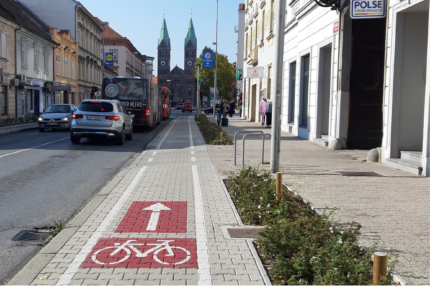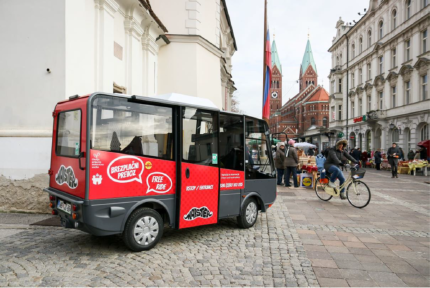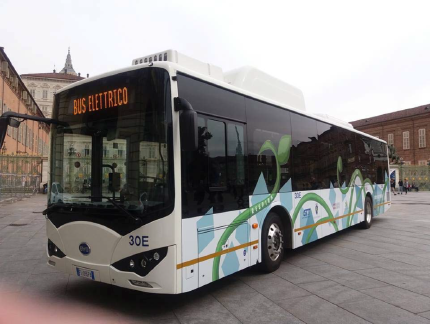Joint webinar held on „Multipurpose usage of public transport infrastructure”
9 December 2021
Interreg EfficienCE and the Interreg Alpine Space e-SMART project joined forces to organise a webinar where presenters dived deep into planning, implementation and research related to piloting and testing solutions for multimodal and multifunctional bus charging stations and their integration with the existing urban transport network. From the Interreg EfficienCE project’s point of view, the focus was on the city of Maribor where e-bus fast chargers are going to be implemented in a multipurpose charging station.
Suzana Fras, Head of the Department for Public services, Traffic and Space at the Municipality of Maribor opened the webinar and highlighted that experts from all over Europe will present the most recent solutions and procedures in the field of multimodal charging stations of e-mobility in cities. She also stated that the Municipality of Maribor has set goals and measures to reduce emissions, noise and to improve quality of life in its strategic documents such as Sustainable Urban Mobility Plan and Sustainable Urban Logistic Plan and carried out numerous measures which promoted sustainable mobility and logistics (ppt).

Photo: Cycling path network in Maribor (source: Municipality of Maribor)
The event was moderated by Marlene Damerau from Rupprecht Consult, who also had a presentation about the EfficienCE project. She introduced the five action plans to be developed within the project, such as the data-driven monitoring of LVB rail infrastructure, or the local action plan for the energy efficiency of the local public transport in Bergamo, and the four pilots (ppt).
Cristina Cavicchioli from RSE explained what the e-Smart project is about: “Strategic and oprerational instruments and tools for e-mobility implementation in Local Public Transport and Last Mile Logistic (e-LPT & e-LML) in Alpine Space communities” (ppt).
Mitja Klemenčič from the University of Maribor talked about the 3-step-approach of the electrification of public transport in Maribor, where the first step is the spatial planning, followed by the technical feasibility of charging concepts and the total cost of ownership (analysis of scenarios) (ppt).

Photo: “Maister” Free of charge mini e-bus for residents and visitors in pedestrian area (source: Municipality of Maribor)
- Milena Orso Giacone from Piedmont Region introduced the experiences and plans to support electric local PT deployment within the e-SMART project (ppt).
- Marco Zanini from GTT shared his knowledge about the electric buses in Turin, what technology they use, and how the electric bus fleet has developed between 2001 and 2021. Since 1st January 2018, GTT electric power is 100% produced from renewable sources of energy (ppt).

Photo: GTT purchased the first 12 metres electric buses fleet (source: GTT)
After a short break, the following speakers introduced their experiences in the multipurpose usage of public transport infrastructure:
- Mikolaj Bartlomiejczyk from PKT (trolleybus operator in Gdynia) and Gdansk University talked about multifunctional multimodal hubs, focusing on how to apply PV system in transportation and also the implemented pilot in Gdynia, namely how a car can be charged by using energy generated in the recuperation process of the trolleybus network (ppt).
- Ibrahim Diab from TU Delft introduced the trolley grid of the future and the possible solutions for trolley grid renewable energy integration (e.g. combining substations or aggregated PV and wind system) (ppt).
- Pietro Tricoli from the University of Birmingham presented the experience of the E-Lobster project, the electric vehicle charging from the traction power supplies, focusing on trams, metro trains and suburban trains. Pietro mentioned that the traction can be connected to another power network using a “smart soft open point” and introduced the main results of the simulation study (ppt).
During the webinar, participants had the opportunity to ask questions from the speakers. Mitja Klemenčič from the University of Maribor closed the webinar, and mentioned that the event was useful as participants heard a lot of new technologies, new solutions, new methodologies and also tested solutions and it was seen it is feasible to implement such new ways of electrified renewable energy.
If you are a public authority or a public transport company and currently in the process of developing a pilot measure for energy-efficient public transport infrastructure, or adopting innovative technologies, we invite you to join the EfficienCE User Forum where you can get more detailed information about our pilots.
To keep you updated on the project results, we invite you to subscribe to the EfficienCE Newsletter!
Background photo: Municipality of Maribor
